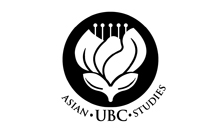Friday, July 6, 2012, 2:30pm – 3:45pm
“Bulletproof Stupa: Framing the Buddhist Heritage of Andhra Pradesh”
Catherine Becker (University of Illinois at Chicago). Buddhist art from ancient South Asia was often crafted to adorn stupas, earthen and brick relic mounds dedicated to
the Buddha and eminent monks. Without the frame of a stupa or other reliquary, most relics, in the words of Robert Sharf, “resemble so much dirt” (1999). How, then, might relics undergo a costume change or find themselves on a new stage? This paper examines the new clothes given to a set of relics unearthed in the early 1990s at the Buddhist site of Bavikonda in northern Andhra Pradesh, India. The 2006 installation of these relics and their reliquaries in the Andhra Pradesh State Museum in Hyderabad was celebrated with an inauguration ceremony led by His Holiness, the Dalai Lama. As the centerpiece of the Holy Relics Gallery, the Bavikonda relics now reside in a small stupa fashioned from bulletproof glass. Analysis of the imagery deployed within the larger gallery that frames the Bavikonda relics reveals the ways that Buddhist art and cultural heritage can be made to articulate current political and religious tensions in Andhra Pradesh.
“On Sacred Ground: Constructing an Ancient Ritual for ‘Tibetan’ Buddhism in Spiti”
Latika Gupta (Jawaharlal Nehru University). This paper addresses the suggested theme of the deployment of traditional Buddhist art for contemporary political, cultural, or religious purposes that differ from original context and use. The paper studies the Chham, an annual public performative ritual, at the Kye monastery in trans-Himalayan Spiti (in Himachal Pradesh, India), to unpack the notion of an ‘ancient’ tradition that is constructed in a modern context for a culture-in-exile. The Chham at Kye presents a unique instance of the intersection between historical and contemporary political and cultural exigencies in the making of tradition. The paper examines the construction of this tradition for the Kye monastery in order to establish its historical relationship with the Tashilhunpo monastery in Shigatse (a relationship that is today mediated through the latter’s functional centre in Bylakuppe in southern India). The ‘tradition’ was created in the late 1960’s by a Chham master from Tashilhunpo, replacing an earlier one that followed the Chham of the Tholing monastery. The paper examines the transformations (and the reasons and effects thereof) that occur in the ritual when it is performed in ‘non-sacral’ spaces and contexts, both in India and abroad. I explore the political reasons for the association between the Kye and Tashilhunpo monasteries and the complex relationship between the Tibetan culture-in-exile in India and a Tibetan form of tantric Buddhism that has flourished on the margins of the Indian nation-state.
“Representing the Sacred and the Profane: A Preliminary Reflection on the Spatial Design of the Chih Lian Complex”
William Ng (Hong Kong Baptist University). This paper seeks to examine the religious significances of the special design of the Chi Lin Nunnery and the Nan Lian Garden, hereafter as the Complex. The Complex forms an important Buddhist attraction in Hong Kong. Although the Complex is famous for her beauty, there is no serious academic study on it. This paper aims to argue to establish two points. First, both the architectural and landscape design of the Complex reflect religious ideas of the Pure Land Buddhist school. Second, the layout signifies the connection of the holy and secular spaces also reflects a turning away from the traditional other-worldly orientation to a this-worldly engagement in modern Buddhism.
“Shalu’s Inaugural Statuary According to the Monastery’s Contemporary Promotional Publications”
Ben Wood (University of Toronto). Two contemporary publications – a guidebook (gnas yig) and a history (lo rgyus) – published by and sold at the Shalu monastery (central Tibet) draw attention to three statues, apparently brought to the temple in the eleventh century. This material describes the statues – said to remain at the monastery to this day – as the institution’s oldest and most significant images. Critically evaluating these narratives vis-à-vis a range of literature generated at the monastery, this presentation suggests that Shalu’s contemporary promotional literature positions the monastery’s extant statuary as material testaments to a particular version of history. And this version of history, I argue, glorifies the monastery, aggrandizing its inaugural period through implicitly mimicking some of the most infamous Tibetan narratives about the arrival of Tibet’s most sacred Buddhist images.




